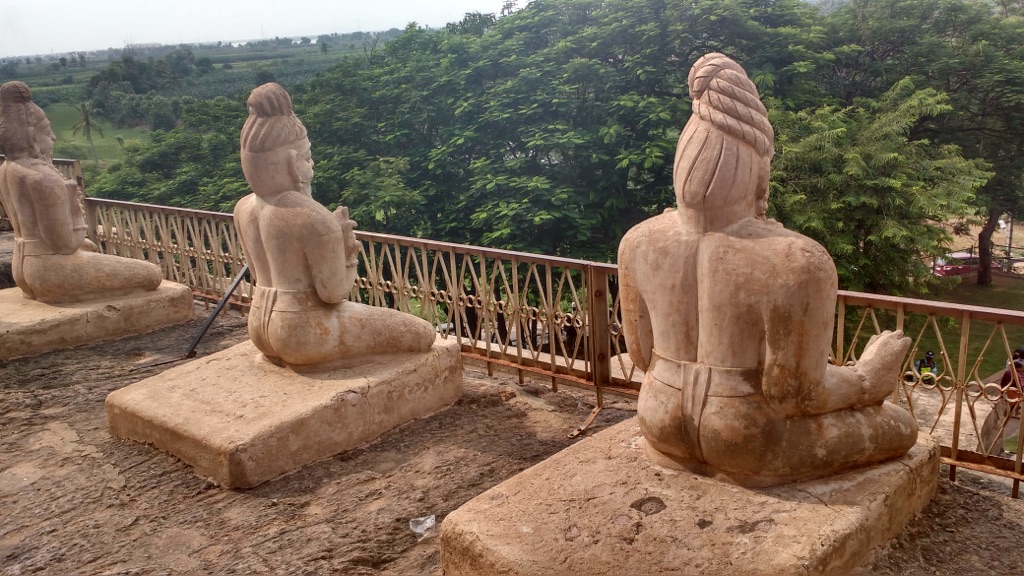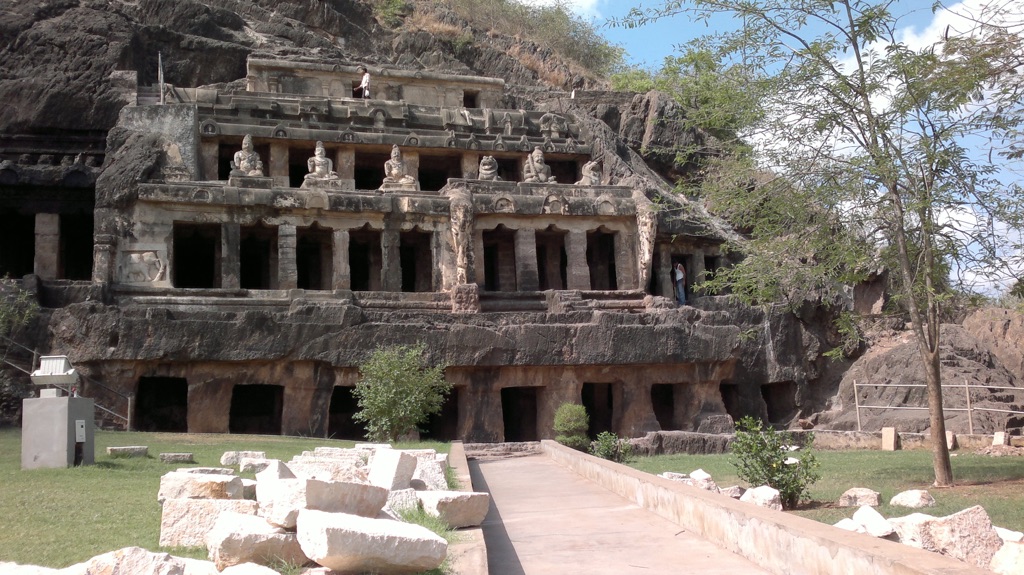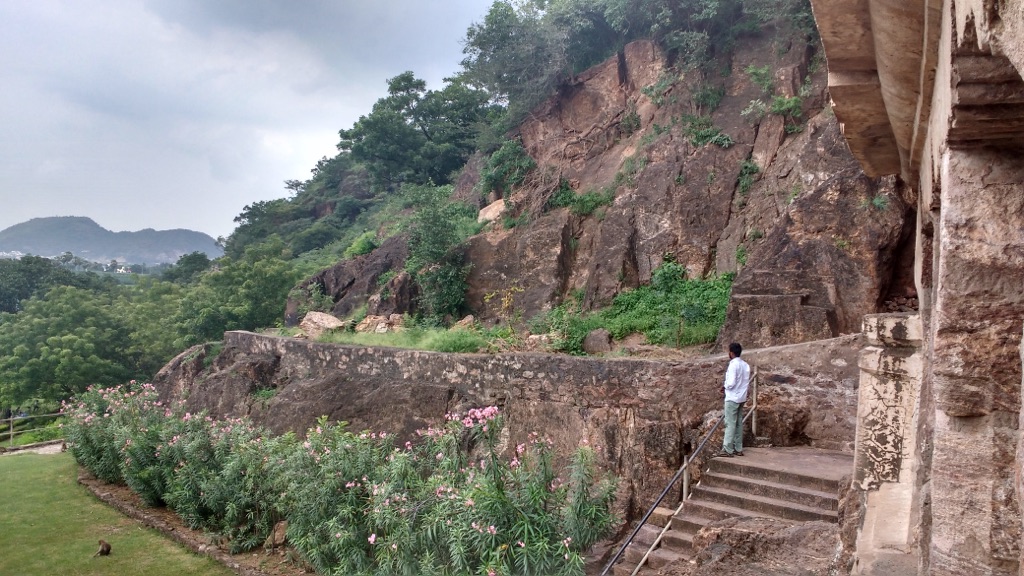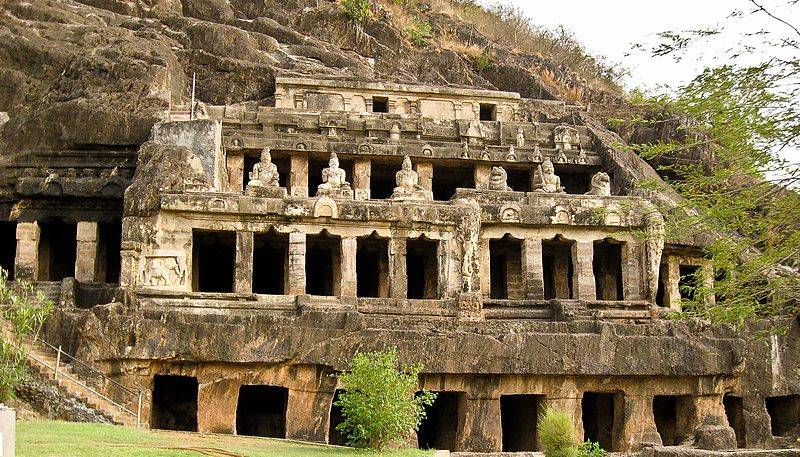The Undavalli Caves, carved out of sandstone on a hillside, are a splendid example of Indian rock-cut architecture. Located in the state of Andhra Pradesh, these caves date back to the 4th to 5th centuries AD. They are renowned for their large sculptures and intricate carvings that depict various deities and scenes from Hindu mythology. The caves are a testament to the skills of ancient Indian artisans and hold significant historical, cultural, and architectural value.
Get your dose of History via Email
Historical Background of Undavalli Caves
The Undavalli Caves were discovered in the 19th century, although their existence was known locally for centuries. They were carved during the time of the Vishnukundina dynasty. The caves are believed to have been used as rest houses for Buddhist monks initially. Over time, they were adorned with Hindu sculptures and became a site for Hindu worship.

The primary creators of the caves were skilled artisans of ancient India. They transformed the sandstone into a place of sanctity and artistry. The caves later became a hub for Hindu monks and worshippers. This transition reflects the religious transformation in the region.
Throughout history, the caves have witnessed various rulers and dynasties. They have stood as silent spectators to the changing political and cultural landscapes. The caves have not been the scene of any known historically significant events but remain a historical treasure.
The architecture and sculptures suggest that the caves were significant for religious and social gatherings. They served as a monastic complex, with facilities for living, meditation, and education. The caves have been preserved as an example of the region’s rich heritage.
Today, the Undavalli Caves are a protected monument under the Archaeological Survey of India. They attract tourists and history enthusiasts from around the world. The caves continue to be a subject of study for historians and archaeologists alike.
About Undavalli Caves
The Undavalli Caves are a four-story complex with a main cave that features a colossal statue of Lord Vishnu in a reclining posture. The caves are primarily made of sandstone, which allowed artisans to carve intricate designs and sculptures directly into the rock.
The construction methods of the caves involved careful planning and execution. Artisans used chisels and hammers to carve the caves from the top down. This technique prevented the collapse of the rock during construction.

The architectural highlights of the caves include finely carved columns, intricate friezes, and detailed sculptures. The caves also feature a number of chambers, halls, and courtyards, each serving a specific purpose.
The main cave is the most elaborate, with its large sculptures and detailed carvings of deities and mythological creatures. The use of natural light through strategically placed openings enhances the spiritual ambiance within the caves.
The preservation of the caves has been a priority, with efforts to maintain their structural integrity and artistic detail. The Undavalli Caves remain a remarkable example of ancient Indian rock-cut architecture.

Theories and Interpretations
The caves have various features that have required interpretation. For example, the large reclining statue of Vishnu is unique and has led to debates about its symbolic significance. Some interpret it as a representation of the deity’s cosmic sleep between cosmic cycles.
There are mysteries surrounding the caves, such as the exact reasons for their construction and the identity of the patrons who commissioned them. The caves’ transition from Buddhism to Hinduism is also a subject of study.

Historians have matched the caves’ architectural styles and sculptures to historical records to date them. The consensus places them between the 4th and 5th centuries AD.
Dating methods such as stylistic analysis of the carvings and inscriptions have been used to understand the caves’ chronology. However, the lack of written records from the period makes precise dating challenging.
At a glance
Country: India
Civilization: Vishnukundina dynasty
Age: 4th to 5th centuries AD
Conclusion and Sources
Reputable sources used in creating this article:
- Wikipedia – https://en.wikipedia.org/wiki/Undavalli_Caves
